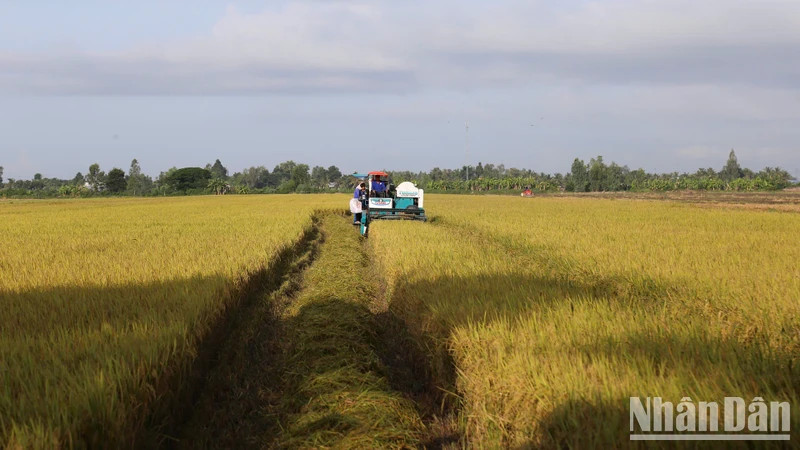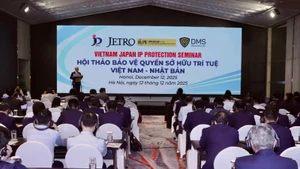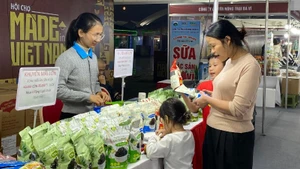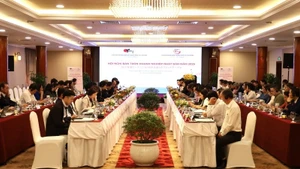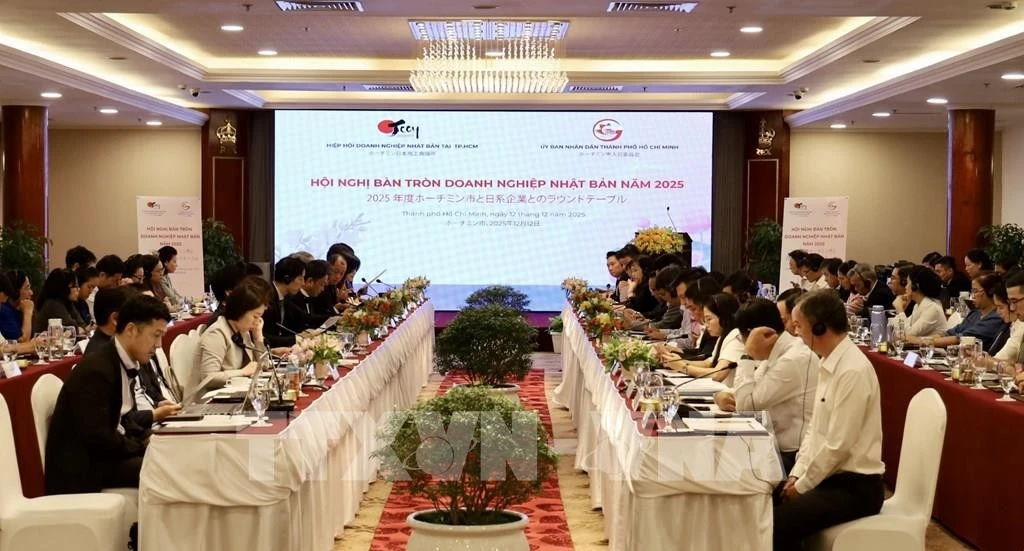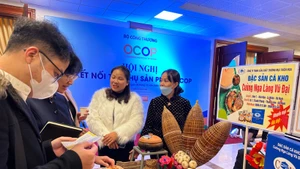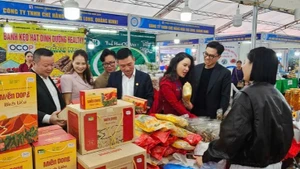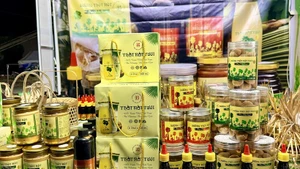According to the Department of Cooperative Economics, to date, the country has more than 14,000 OCOP products rated 3 stars or higher. OCOP products create stable jobs, helping people increase their incomes.
Developing valuable agricultural products
The application of science and technology to production along with the orientation of building product brands from OCOP standard certification is one of the important factors for many local agricultural products to affirm their brands and gain a firm foothold in the market.
To date, the country has more than 14,000 OCOP products rated 3 stars or higher. OCOP products create stable jobs, helping people increase their incomes.
In many localities, the development of OCOP products is currently considered a solution to improve economic efficiency for farmers, gradually shifting the self-sufficient agricultural production model to an agricultural economy based on market demand.
In Doan Ha Commune (Thanh Thuy District, Phu Tho Province), most of the agricultural land area is used by farmers to produce two rice crops, with low economic efficiency. After being advised by the local agricultural sector that the soil conditions in Doan Ha are suitable for the specialty rice variety ST25, Doan Ha Agricultural Service Cooperative has implemented a trial planting of this rice variety.
Overcoming initial difficulties, the ST25 specialty rice production model of the cooperative has brought economic efficiency and environmental benefits through each crop.
The correct implementation of the rice care process provided by the cooperative helps people reduce production costs. After three crops, the average rice yield reached 60-65 quintals per hectare, while the nutritional value and income of the ST25 rice variety are also higher than that of regular rice.
Not only the people of Doan Ha Commune have succeeded with the ST25 rice variety, in Xuan Truong Commune, Da Lat City, is also one of the localities with the largest persimmon growing area in Lam Dong Province with about 300 hectares, the average yield is about 4 tonnes per hectare. 6-7 years ago, farmers had to struggle to find an outlet every time the persimmons ripened, but now, wind drying technology has helped the value of fresh persimmons increase nearly 10 times.
Thanks to wind-hanging technology, persimmons have gradually regained their position on the "agricultural product map" of the mountain town, contributing to the prosperity of many households in the Lang Biang Plateau.
With the 4-star OCOP certification, the wind-hanging persimmon brand of the Lam Vien Plateau is widely known and favoured by consumers for its delicious, naturally clean quality.
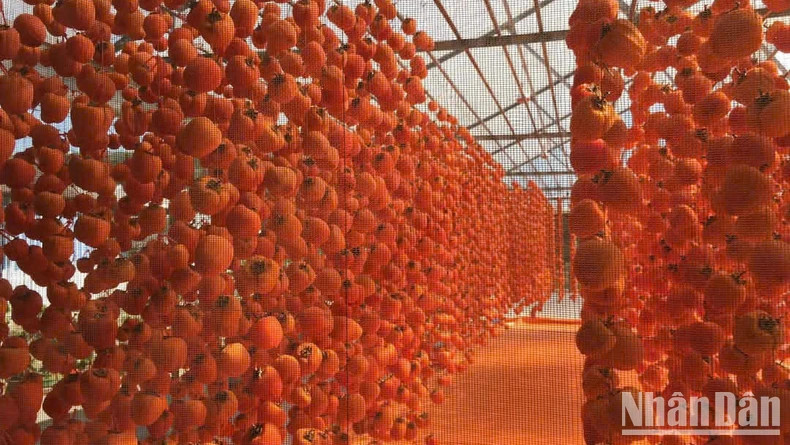 |
| Lam Dong wind-hanging persimmon production model. |
To diversify processed products, local people have planted several new varieties. Nguyen Trong Binh, Vice Chairman of Xuan Truong Commune People's Committee, said that the commune's goal is to export wind-dried persimmons.
Elevating OCOP products
Persimmon trees have brought many practical values to the people of the mountain town. From being intercropped on tea hills and coffee gardens for fruit, over time, persimmons have become a specialty of this land.
With the support and technology transfer from the Japanese organization JICA, wind-dried persimmons have now become a famous agricultural product of the mountain town of Da Lat.
Wind-hanging persimmons is not difficult, does not require additives or preservatives, so people can easily apply this technology depending on the economic conditions of each family. After being picked from the tree, peeled, and soaked in hot water or sake, farmers will hang the persimmons from strings or hooks in long rows in front of the house or in a greenhouse to dry in the wind, creating a beautiful scene in the middle of the mountains and forests.
Applying "hoshigaki technology" (wind-hanging persimmon technology) has helped persimmons increase their value and economic benefits for farmers.
According to people's calculations, on average 6 kg of fresh persimmons will produce 1 kg of finished product. Each kilogram of wind-hanging persimmons helps producers make a profit of 150,000-200,000 VND after deducting costs.
Returning to Doan Ha Commune, Thanh Thuy District (Phu Tho), to improve economic efficiency on the same area of agricultural land, the ST25 specialty rice variety is considered a breakthrough in changing crop varieties, increasing the value of rice grains as well as aiming to develop a high-quality commercial rice model in the locality.
Nguyen Manh Ha, Vice Chairman of the People's Committee of Doan Ha Commune, said that after 4 production seasons, the ST25 rice variety has proven to be highly effective. The locality has a plan to expand the production area of ST25 specialty rice.
To implement the plan, the local government has mobilized people to consolidate land plots, proposed competent authorities to support cooperatives to consolidate land, creating conditions to promote mechanisation in production. For this rice variety, the commune is developing VietGAP standards and aiming for a 4-star OCOP product to gradually become a commodity rice variety.
According to Director of Doan Ha Agricultural Service Cooperative Nguyen Tien Cong, in order to improve economic efficiency and the brand value of agricultural products, Doan Ha Agricultural Service Cooperative has completed the application for a 3-star OCOP certification for ST25 rice products.
"In order for people to produce according to a guaranteed standard, the cooperative has coordinated with the commune production steering committee to propagate to people to clearly understand the process of a VietGAP and OCOP standard product," said Cong.
In addition to the efforts and application of mechanisms and policies to encourage local autonomy, Resolution No. 22 of the Phu Tho Provincial People's Council (issued in 2021) is also considered a guideline for the application of a number of specific mechanisms and policies to support and promote the field of agricultural commodity production in the locality.
Along with Resolution No. 22, the agricultural sector has been actively advising local authorities to create conditions for collective economic organisations and cooperatives to access policies to support production development associated with sustainable agricultural product consumption.
